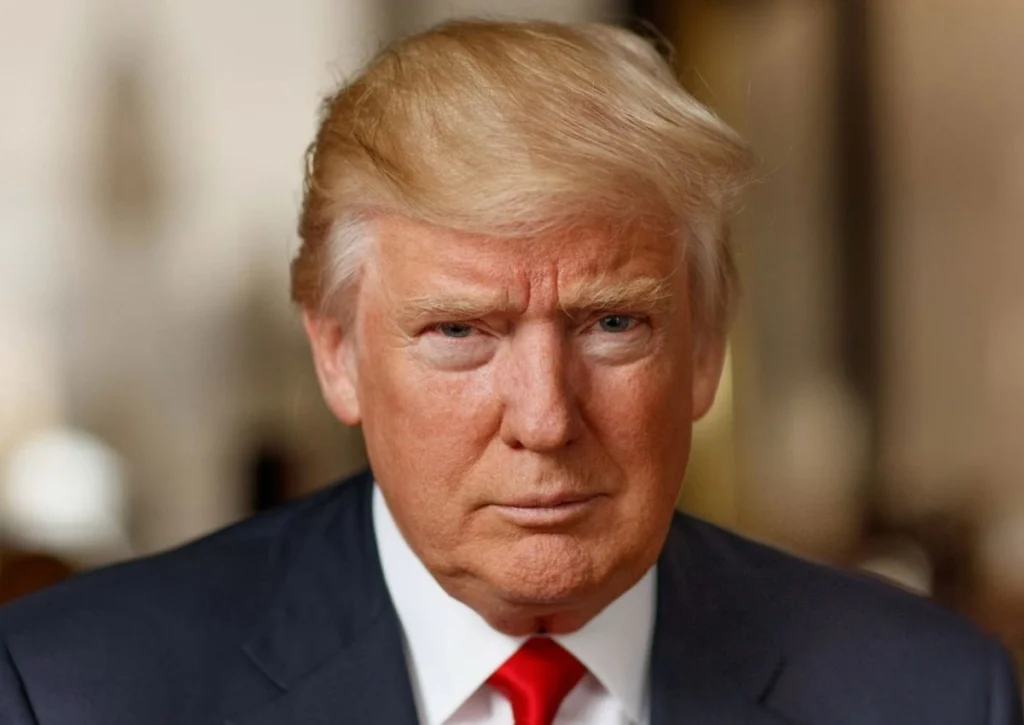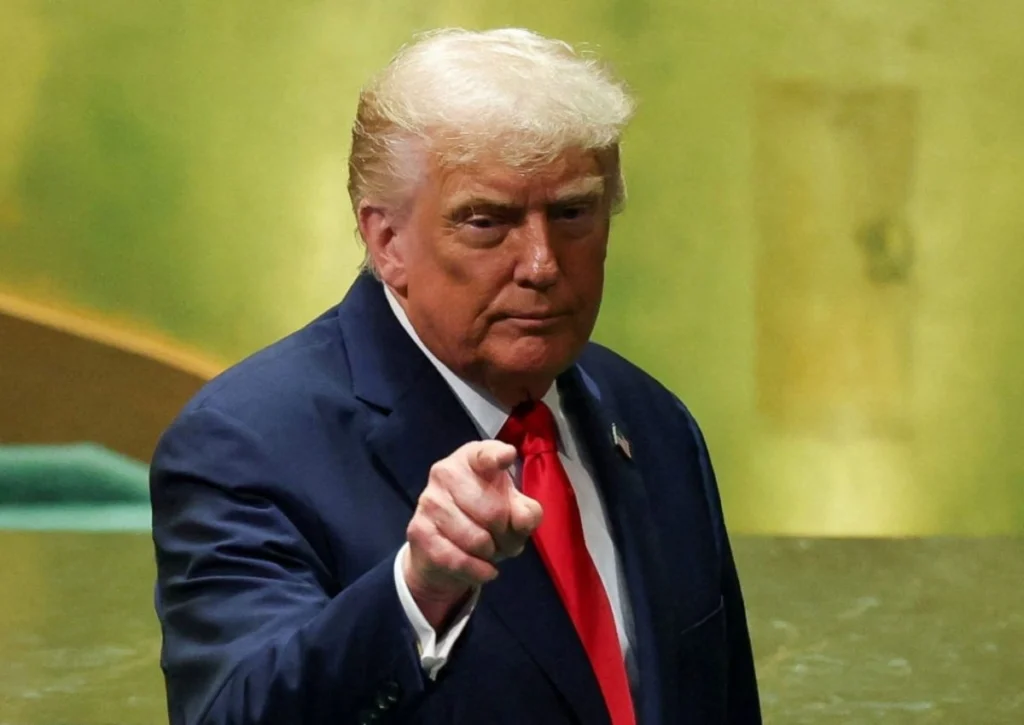The recent statement made by President Donald Trump to impose a comprehensive 100% duty on imported pharmaceutical goods has been a shock to the entire healthcare industries around the world and the Indian pharmaceutical industry has been hit the hardest.
India, which is the largest generic drugs supplier in the world, is now facing challenges never faced before which may transform the entire pharmaceutical industry across the world.

Tariff Announcement: What You Should Know
On September 26, 2025, President Trump, through Truth Social, declared that on October 1, 2025, the United States would have a 100 percent tariff on all imported branded and patented pharmaceuticals. But those companies which would be actively building manufacturing plants in the U.S. territory would be spared such punitive actions.
This policy is based on the Trump trade agenda of America First and is preceded by an April 2025 Section 232 investigation on whether pharmaceutical imports are a national security threat. The administration is seeking to roll back the decades of diminishing production of domestic drugs by attracting foreign firms to open manufacturing plants in the U.S.
Such policies have already shown their immediate success by major pharmaceutical firms such as Eli Lilly and Johnson and Johnson announcing new investments in the United States as a result of the strategy.
India’s pharmaceutical industry
The pharmaceutical sector of India is worth 50 billion and is projected to rise to 50 billion in 2023-24 and can be regarded as the Pharmacy of the World due to the prevalence of generic drug production. The country’s impressive statistics underscore its global significance:
- 20% of global generic medicine supply
- 60% contribution to worldwide vaccine production
- Highest number of FDA-approved manufacturing plants outside the United States
- Nearly 40% of U.S. generic drug market supply
In fiscal year 2025, India exported approximately $10.5 billion worth of pharmaceutical products to the United States, representing over one-third of its total pharmaceutical exports valued at $26.5 billion. The U.S. market accounts for 31% of India’s total pharmaceutical exports, making it the single most important destination for Indian drug manufacturers.
Immediate Market Reactions and Concerns
The announcement of the tariff had an instant market effect and drug stocks of India saw a drastic decrease. The stocks of major companies such as Sun Pharmaceutical Industries and Natco Pharma fell up to 3.4 per cent, as investors were anxious about the possibility of exports being affected.
The major Indian pharmaceutical firms like Dr. Reddy s Laboratories, Aurobindo Pharma, Sun Pharma, Lupin and Zydus Lifesciences earn 30-50 percent of their revenue in U.S. markets. They based their success on the American preference of generic drugs, which are cheap and cover 90 percent of prescriptions in the United States and yet were only consuming 1.2 percent of the national healthcare expenditure.
The Ripple Effects: Beyond Indian Borders
Impact on U.S. Healthcare System
The implications extend far beyond Indian pharmaceutical companies. The U.S. healthcare system heavily relies on Indian drug imports, with India supplying:
- Over 45% of generic medications
- 15% of biosimilars
- Essential treatments for chronic conditions like hypertension and pain management
The industry estimates that Indian pharmaceutical imports assisted the U.S. healthcare system to save about 219 billion in 2022. An imposition of 100% tariff may have instant effects such as:
- Price spikes for essential medications
- Reduced availability of critical drugs
- Potential medicine shortages affecting hospitals and clinics
- Higher out-of-pocket costs for patients and insurers
- Disrupted treatment schedules for chronic disease and oncology patients
Supply Chain Disruptions
Experts in the industry fear that with the tariffs, the U.S. will be compelled to depend on China as the source of life saving drugs, which will compromise the national security goals of Washington.
One of the pharmaceutical exporters of Himachal Pradesh said that in case it is implemented, we will have no option but to cease the supply of the drugs to the U.S. Patients there will suffer more than Indian manufacturers.
This was echoed by an Andhra Pradesh manufacturer who said, our drugs save the U.S. system in the tune of 200 billion dollars a year. In the case tariffs are implemented they cannot supersede our supply at least in 2-5 years.
Tactical Responses and Adaptation
Resiliency Strategy at Indian Industry
Nevertheless, this crisis is seen by some of the leaders in the industry as a chance to change. As Rishad Dadachanji of the Dadachanji group notes, there would be supply chain disruption, and this would be detrimental to U.S. consumers, but Indian pharma is tough. Firms already diversify markets, invest in R and D and look at new relationships. This may even hasten the self reliance of India in the industry.
Indian pharmaceutical companies are implementing several strategic responses:
- Market Diversification: Accelerating efforts to reduce dependence on the U.S. market by exploring opportunities in Europe, Africa, and Asia-Pacific regions.
- Manufacturing Investments: Considering U.S.-based manufacturing facilities to qualify for tariff exemptions.
- Supply Chain Optimization: Adjusting global supply chains to minimize disruption.
- R&D Enhancement: Increasing investment in research and development to maintain competitive advantages.
Long-term Implications

The possibility of the tariff policy also casts doubt on future trade of pharmaceuticals in the world. Although the purpose of the strategy used by Trump is to increase the independence of the pharmaceutical sector of the United States, the timeframe of changing suppliers might introduce even more serious issues regarding the access to the healthcare services of American patients relying on the cheap Indian drugs.
According to industry analysts, a full-fledged 100 percent tariff may result in a decreased short- and medium-term earnings of the Indian pharmaceutical companies by 5-10 percent. But, the final influence will be based on the final scope and implementation of the tariff.
The Greater Economic Environment
Currency markets have also been impacted by the announcement where the Indian rupee has been subjected to downward pressure owing to the expected decrease in export revenue. It is possible that the rupee may continue to decline against the U.S dollar, and this will depend on how the market will react and the ultimate introduction of the tariff.
Final thoughts
The introduction of a 100-percent pharmaceutical tariff by Trump is a step that the healthcare supply chain of the world cannot ignore. Although the policy is meant to enhance the U.S. pharmaceutical production, it presents short-term problems to the Indian exporters and American patients who are relying on cheap drugs.
The next several months will also be decisive as businesses, governments and healthcare systems will change to this new reality. The key will be how well Indian pharmaceutical firms can branch out their markets, whether the U.S. domestic production will be able to grow fast enough to keep up with demand, and how the healthcare costs and access will be addressed during this period of transition.
With the date of October 1, the whole pharmaceutical ecosystem should be ready to major changes that can transform drug supply chains the world over in the next few years. The final test will be whether this policy will produce the intended outcome of enhancing the U.S. pharmaceutical security without hurting the accessibility of patients to the necessary medication.
Also check:- India-UK Textile Partnership: Technical Textiles Driving Sustainable Trade




